Restored Memories
 Mon, July 27, 2020
Mon, July 27, 2020 
Just this last week I received an email from Jim Taylor, owner of a bike store called “Grindin’ Gears Bikes n’ Boards, in Lloydminster, Alberta, Canada. Jim had come into possession of a “project” bike as he referred to it. A custom ‘dave moulton’ frame, that he intends to restore, and ride himself.
 I reached for my frame numbers record book, a little hardcover notebook where I recorded frame numbers of custom frames built from 1982 to 1986. When I moved my shop from San Marcos to Temecula, California, the book got misplaced during the move, and it is a small miracle that it survived and I still have it today.
I reached for my frame numbers record book, a little hardcover notebook where I recorded frame numbers of custom frames built from 1982 to 1986. When I moved my shop from San Marcos to Temecula, California, the book got misplaced during the move, and it is a small miracle that it survived and I still have it today.
 This frame number is 1835, it is a 62 cm. frame. Custom frame numbers represent the date it was built.
This frame number is 1835, it is a 62 cm. frame. Custom frame numbers represent the date it was built.
This one was built in January 1983 and it was the 5th frame built that month.
It was ordered through Two-Wheel Transit Authority, a bike store in Huntington Beach, California. (Orange County, South of LA.)
A huge bike store that was housed in a building that was formerly a Bowling Alley.
Jim tells me that the original customer’s name is on the frame, Paul Johnson. The bike was picked up in Palm Springs, California, and brought to Alberta by a customer of “Grindin’ Gears. Sadly, the bike has been neglected for many years, probably stored in an outside barn, or shed.

Looking at my frame numbers book (Above.) brought back a lot of memories. In early 1983 I was still working out of the Masi shop in San Marcos. Previously working for Masi until the end of 1981 when I was laid off because of an overstock of Masi frames and a downturn in the economy.
In a bad economy there are always people who have money, and believe it or not one can survive making a high end product, where the issue is not the price but the quality, and even more important is delivering the product in a timely manner. I would build and deliver a custom frame in as little as two weeks.
 Last frame built 1982. (See book page above.) Owner David Ball
Last frame built 1982. (See book page above.) Owner David Ball
I sold my frames through a network of bike dealers across the US. Dealers originally contacted by cold calling on the phone. The bike dealers loved it because they not only made a markup on the frame, the made money on the components, and labor to build wheels, and assemble the bike.
 Frame #1834Selling though dealers gave me the quantity of orders that I could not have achieved by selling direct to individuals.
Frame #1834Selling though dealers gave me the quantity of orders that I could not have achieved by selling direct to individuals.
By January 1983 I had so many orders to fill, I was working 18 hours a day, 6 or 7 days a week.
The pages in my book shows, I built 10 custom frames that month. February (A short month.) I built 7 more frames, and March another 11.
It had become obvious that I needed to get out of the Masi shop, and into my own facility. I did this by July 1983. Altogether in 1983, I built 96 custom frames, plus by the end of the year another 200 John Howard frames.
 Frame #1839Looking back, it was a lot of work, but the repartition of building so many frames made me a better framebuilder.
Frame #1839Looking back, it was a lot of work, but the repartition of building so many frames made me a better framebuilder.
It also made me faster so I could build even more, at the height of production I built 500 Fuso frames a year.
By then I did have employees doing much of the prep and finish work, plus I had a full-time painter. In the eary years I also did my own painting. Everything shown on this page, I painted.
The only problem was, when the demand for road frames dropped, it was no longer viable to keep going. By then I was burned out anyway.
 Frame #2831Was it all worth it? You bet it was. There is a whole legacy of frames still out there, still being enjoyed by their owners. I still put in a lot of hours, writing this blog and maintaining my Bike Registry. However, I am a firm believer that a person should have a purpose in life.
Frame #2831Was it all worth it? You bet it was. There is a whole legacy of frames still out there, still being enjoyed by their owners. I still put in a lot of hours, writing this blog and maintaining my Bike Registry. However, I am a firm believer that a person should have a purpose in life.
Nearly every email I get starts something like this: “To be honest I had never heard of you or the Fuso, until I found this bike and looked it up online.” So, without all the time I spend promoting the brand now, all the hours I worked back then would be wasted, and many of these frames I sweated over would be in landfills.
 #2832 Original owner Chuck Schmidt. Used regularly and still in mint condition. Also shown below.
#2832 Original owner Chuck Schmidt. Used regularly and still in mint condition. Also shown below. Throughout this article I have shown other bikes built around January/February 1983. Below is a track frame #2833 built for Jim Zimmerman and raced on the Trexlertown track in PA. Later it was bought and used as a "Work bike" by the late "Fast Eddie Williams, renowned bike messenger in New York City. (Below.) (Read articles here.)
Throughout this article I have shown other bikes built around January/February 1983. Below is a track frame #2833 built for Jim Zimmerman and raced on the Trexlertown track in PA. Later it was bought and used as a "Work bike" by the late "Fast Eddie Williams, renowned bike messenger in New York City. (Below.) (Read articles here.)

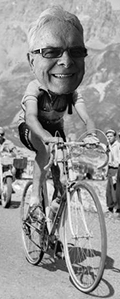









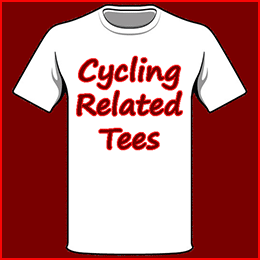
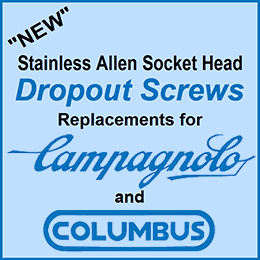














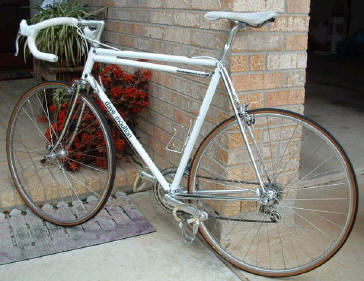
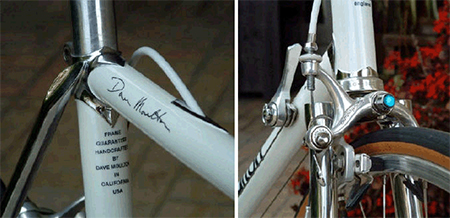
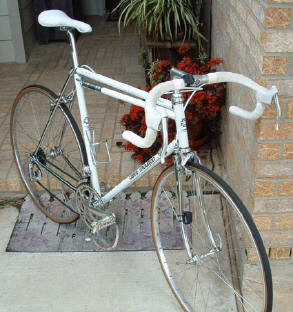






Back from the Classic Rendezvous Weekend
It was such a joy to attend the Classic Rendezvous Weekend event in Greensboro, North Carolina. I always look to these events as an opportunity to meet old friends and make new ones. I did plenty of that.
It was also great to be reunited with many examples of my past work, and to talk with the owners. Most had corresponded via email for years, but this was the first time we had met face to face, and to actually shake hands.
For example, a 1983 custom Criterium bike, #9832. Built for the Interbike Show that year. I had corresponded with at least three different owners for the last 15 years, but last weekend got to meet the current owner John Ames. (Picture above.) Also this was the first time I had laid eyes or hands on this bike since it was picked up by one of my dealers after the Interbike Show some 35 years ago.
John has done a fine job of restoring this bike to its former glory, while keeping the original paint finish. Skillfully mixing paint and touching in the tiny chips with a brush. The result is the bike has character, a story to tell, (Read here.) but still retaining its original beauty.
Contrastingly, 1st. Generation Fuso #171, built in San Marcos, CA. in the first six months of production. Now owned by John Majors, (Above.) who bought the frame with paint and decals in as pristine condition as the day it left my shop. Like going back in time and buying a brand new frame. Makes me wonder, how many more unused gems are still out there waiting to be found.
I had met John Majors and his wife a few years ago when they visited Charleston. It was nice to reunite with them both again.
Peter Stock (Above.) had traveled from his home in Toronto, Canada, He brought his built in 1989 Fuso FRX #1643. His bike it appears is even more traveled, it has a French Bike Shop sticker on it. This is one of two Fuso bikes owned by Peter. This one he has owned since 2010, the other he picked up in 2013. We had corresponded before, but met for the first time at the CR Weekend.
Thanks to Dale Brown, of Cycles De Oro, Wayne Bingham, and others who make this event happen.